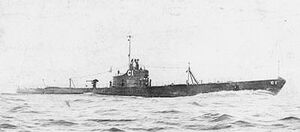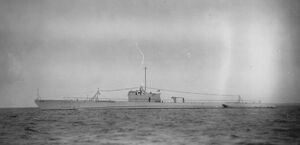Cachalot and Cuttlefish
Design and Construction Notes
In the original construction authorization for the V-class dating back to 1916, these two boats were known as V-8 and V-9. However, by the time the construction contracts were signed, their names had been changed to comply with the new naming system. Thus, these boats never officially carried the V-class names.
EB was eager to get back into the submarine construction business, so they asked for and received permission to make several changes to the basic design as developed by the USN Bureau of Construction & Repair. They were able to provide separate crew's berthing and messing, and they expanded the use of welding in the hull fabrication, although both Cachalot and Cuttlefish were built to a partial riveted/partial welded construction method. Cuttlefish was also the first boat in the fleet to receive an air-conditioning plant, with its use so successful that all of the fleet submarines were subsequently refitted with one, and all future boats were built with a plant as original equipment. The Torpedo Data Computer (TDC), a mechanical computer used to provide a firing solution for torpedoes, was first tested in these boats, proving the concept.
While generally successful, these boats were ultimately too small and had too short a range for the role of operating with the fleet in the vast Pacific. After several non-productive war patrols in the early months of WWII, they were retired back to the States and served well as training boats for the remainder of the war.Cachalot (SS-170)


